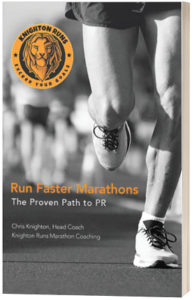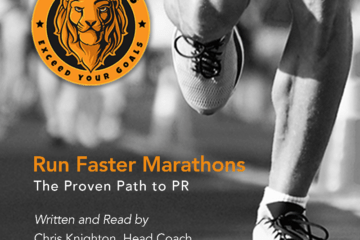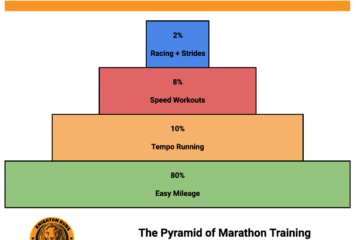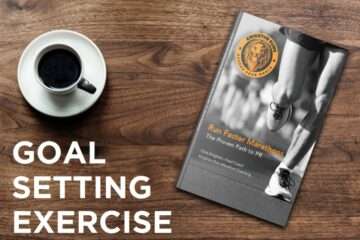How Marathon Runners Can Overcome Chronic Hamstring Injuries
Break the cycle with these PT-recommended strategies
By Alex Burke, PT, DPT
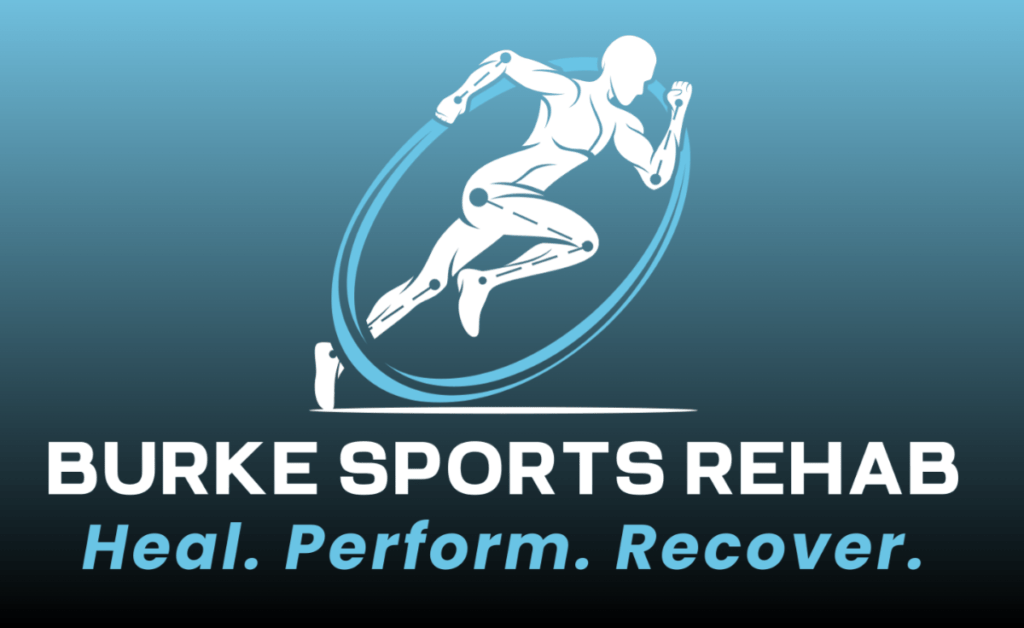
This is a guest post by Alex Burke, PT, DPT. Learn more about Alex and how he helps runners at BurkeSportsRehab.com.
Disclaimer: The content on this site is for informational and educational purposes only, and does not substitute professional medical advice, or consultations with healthcare professionals. Please consult your own qualified medical practitioner before attempting to diagnose or treat any injury.
Problems and Solutions (Hamstring Injuries + Marathon Runners)
Hamstring injuries can pose a major setback for marathon runners.
Imagine you are on your final 800-meter rep at the track when you are abruptly halted by your chronic hamstring injury acting up again.
Frustration and despair immediately sets in as you realize how this hamstring injury could affect to your upcoming running goals.
Whether you are dealing with an acute hamstring strain, lingering tendonitis, or tired of your hamstrings cramping at the end of marathons, what if I told you there’s a way to put an end to these injuries?
As a physical therapist and marathon runner, there are commonalities I see in all hamstring injuries and easy solutions to address them.
Problem #1: Glute Weakness
Hamstring injury usually stem from a weakened glute muscle. Despite the hamstring’s role in hip extension, the glute, as the body’s largest and most powerful muscle, should take the lead. Prolonged periods of sitting, a common problem in today’s world, can weaken the glute over time, placing undue stress on the hamstring. A strong glute is essential for runners, and neglecting it can lead to overworked hamstrings.
Solution: Reverse Lunge
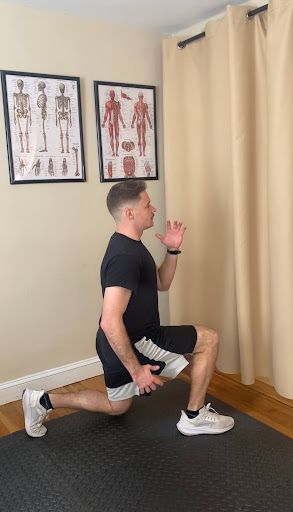
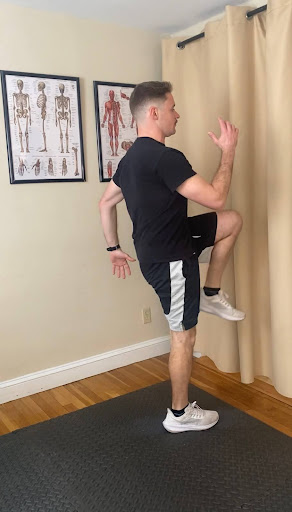
This is one of the best running-specific glute strengthening exercises. If you’re targeting the right glute, keep your chest tall as you take a big step back with your left leg and sink your weight down. As you rise back up, drive up through your right heel and squeeze your glute while keeping your knee back. Perform 8-10 reps for 2-3 sets.
Problem #2: Hamstring Weakness
Strengthening the hamstrings is a crucial aspect of rehabilitating and preventing injury. The demands of running, especially speed work, places excessive force on the hamstrings. If the hamstrings don’t have the strength to handle these demands, damage can occur. Incorporating hamstring strengthening exercises into your weekly strength routine will build resilience and tolerance when running fast.
Solution: Kickstand RDL
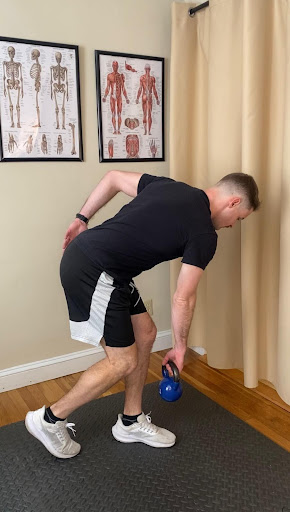
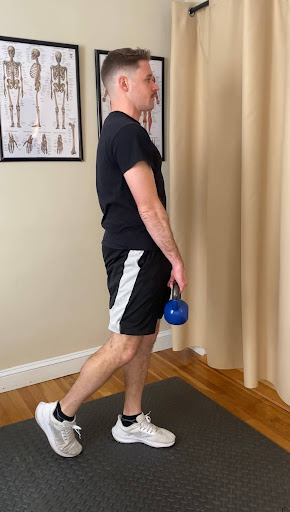
This is a great exercise to help lengthen and strengthen the hamstring. When targeting your left hamstring, have your right foot about a ½ foot behind the left foot with the heel off the ground. Aim to have 80% of your weight in your left leg. With a slight bend in your left knee, keep your core engaged and back flat as you sink your hips back and lower the weight down over your left foot. You should feel a big stretch in the left hamstring. Complete the exercise by standing back up and bringing your hips forward to the starting position. Perform 8-10 reps for 2-3 sets.
Need a Kettlebell to help with this exercise? Click Here.
Problem #3: Tight Hip Flexor
The hip flexor is the antagonist to the glute, working to lift the leg and drive the knee forward when running. Extended periods of sitting tighten the hip flexor, which, combined with lengthened glutes, creates a muscular imbalance. This imbalance compels the hamstring to overcompensate for the weakened glute, resulting in increased strain during activities like running.
Solution: Kneeling Hip Flexor Stretch
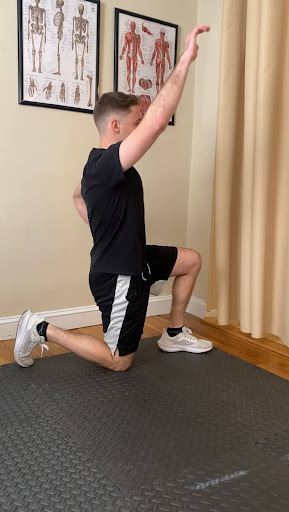
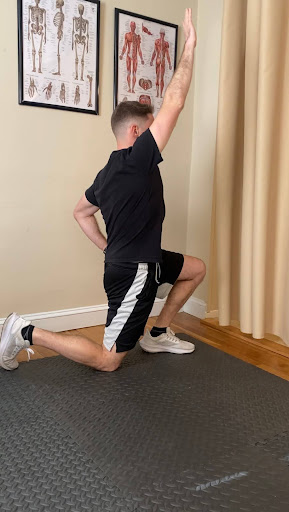
This is a simple hip flexor stretch that should be a staple in everyone’s mobility routine. If you’re looking to stretch your right hip flexor, place your right knee on the ground. Squeeze your right glute and drive your hips forward so you feel a stretch in the front of your hip and thigh. Raise your right arm to enhance the stretch. To isolate the hip flexor, make sure you avoid arching your lower back. Hold for 60 seconds.
Problem #4: Poor Muscle Pliability
Muscle pliability refers to your muscles being long, resilient and able to move without restriction. Increased density and tightness in a muscle limits its ability to contract and relax properly, resulting in reduced muscle flexibility, activation and strength. The foam roller is a valuable tool for breaking up knots and tight areas, increasing blood flow and restoring proper muscle function. While stretching is beneficial, it may not always effectively target these problem areas.
Solution: Foam Roll Hamstrings With Sphere
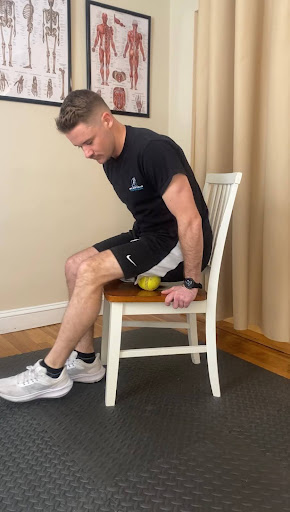
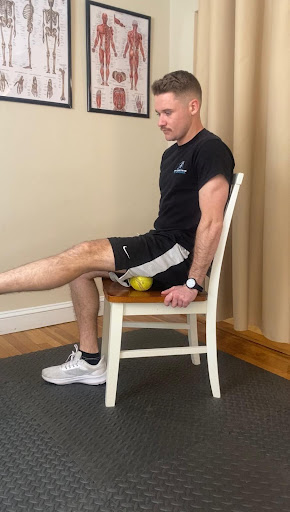
This is an effective foam rolling technique for the hamstrings that will improve muscle pliability and address those deep knots. Place the softball underneath your hamstrings and sink your weight into it. Spend most of your time on the areas that are dense and tender. After 1-2 minutes, kick your leg out to lengthen the hamstring as you foam roll it to get an active release. Roll for 60 seconds and kick the leg 10 times.
Need a Softball to help with this exercise? Click Here.
Problem #5: Dehydration
Hydration is often overlooked even though it is necessary for muscle function. Muscles are about 75% water and require sodium for proper firing during performance. Dehydration and sodium deficiency elevate the risk of muscle strains and tendonitis. Aim to drink at least half your body weight in fluid ounces of water per day, and consider adding a pinch of salt or an electrolyte solution to your water to keep your muscles healthy and hydrated.
Solution: Use a Big Water Bottle

One of the easiest ways to improve your hydration is to use a big water bottle. It can be difficult to reach your daily hydration goal via filling up cups or drinking several small bottles all day. Carrying a big water bottle with you everywhere you go allows you to consistently hydrate throughout the day. It is also convenient because you don’t need to refill it as frequently.
Need a New Water Bottle to help build this habit? Click Here.
Conclusion (Hamstring Injuries + Marathon Runners)
Understanding the interplay between muscle groups, addressing weaknesses, and adopting proactive measures such as hydration and foam rolling exercises can help you rehabilitate and prevent hamstring injuries. Some other notable factors that can reduce risk for injury include running with good form, not over-doing weekly speed training and incorporating a proper warm up and cool down routine.
If you experience a hamstring injury, be sure to consult with a physical therapist so you can get evaluated, treated, prescribed corrective exercises and given a personalized plan to get you back on the road.
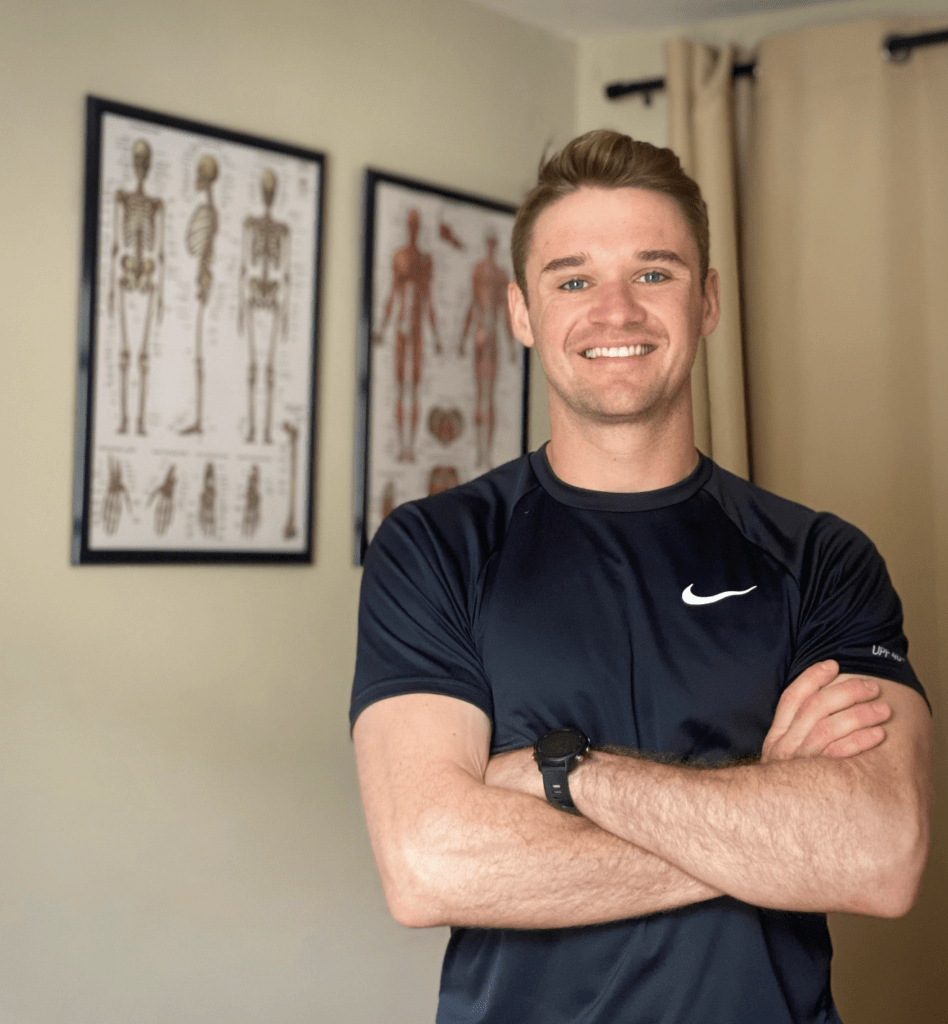
Alex Burke is a passionate Doctor of Physical Therapy and the owner and founder of Burke Sports Rehab, located in Newton, MA.
He is also a member of the Knighton Lions and is accepting new clients at this time.
Alex can be reached via his website, www.BurkeSportsRehab.com
You can follow Alex on Instagram @burke_sportsrehab
